Update – The Philippines, Indonesia and Myanmar (Burma)
In The Philippines, the Defence Secretary confirmed that the two primary leaders of the armed groups behind the prolonged war in Marawi City had been killed in clashes with Armed Forces of The Philippines (AFP) soldiers on 16 October.
Abu Sayyaf leader Isnilon Hapilon and Maute Group leader Omar Maute were killed as troops assaulted an enemy position to rescue hostages. A photo of a bloodied Hapilon, his face raised for the camera by a soldier, was circulated among Marawi residents to assure the population that the siege was finally over.
As at the first week of November, military cleanup operations in Marawi are still underway, to flush out remaining terrorists and to clear the battle area of improvised explosive devices (IEDs), and martial law in Mindanao remains in place.
BACKGROUND
Isnilon Hapilon was the “emir” of the Islamic State (IS) in Southeast Asia. He left his primary area of operations in Basilan in late 2016, to join the Maute Group in Butig, Lanao del Sur, where Omar Maute and his brother Abdullah led an occupation of Butig town centre, to the south of Lake Lanao and Marawi city.
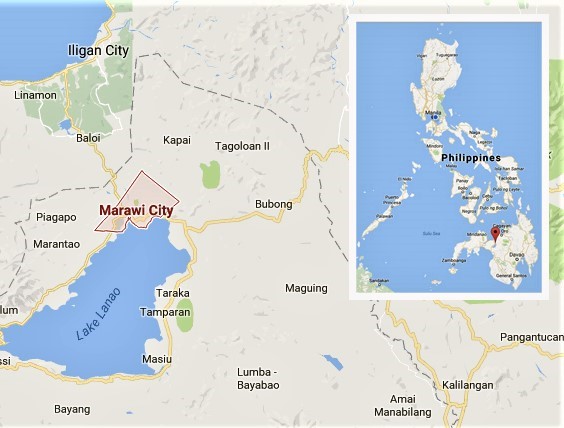 By early 2017, the AFP had forced the Maute group into the mountains outside Butig but in May 2017, the armed group brought the war to Marawi City itself, when the military attempted to arrest Hapilon after locating him in a safe house close to their Brigade Headquarters, which led to the commencement of what would be become a 5-month campaign to clear the IS-aligned group out of Marawi City.
By early 2017, the AFP had forced the Maute group into the mountains outside Butig but in May 2017, the armed group brought the war to Marawi City itself, when the military attempted to arrest Hapilon after locating him in a safe house close to their Brigade Headquarters, which led to the commencement of what would be become a 5-month campaign to clear the IS-aligned group out of Marawi City.
Though the first shots of the war started in May 2017, AFP military intelligence and the National Police had been watching Marawi City residents Cayamora Maute and his wife Farhana since 2007, a decade earlier The parents (pictured) of the now notorious “Maute Brothers” were allegedly providing safe haven to visiting militants from Indonesian terrorist group Jemaah Islamiyah (JI).
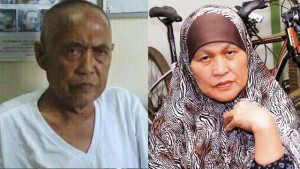 The parents of the Maute brothers reportedly assisted the JI cadres to move personnel, funds, and supplies around Mindanao, using as a front a commodity trading business in Surabaya, Indonesia which belonged to Farhana Maute.
The parents of the Maute brothers reportedly assisted the JI cadres to move personnel, funds, and supplies around Mindanao, using as a front a commodity trading business in Surabaya, Indonesia which belonged to Farhana Maute.
At that time (2007), Al Qaeda was considered the world’s deadliest terrorist network and JI (which had been responsible for the Bali bombing in 2002 which had killed over 200 foreign tourists – including 88 Australians) had announced their allegiance to AQ.
Ten years on from the Bali bombing, in 2012, the Maute family unwittingly (there are some reports that say wittingly) led the AFP to Ustadz Sanusi, one of 7 JI members who had sought refuge in Mindanao. Sanusi was on the most wanted list in Indonesia for the 2005 beheading of 3 Christian schoolgirls in Indonesia and was killed inside the compound of the Mindanao State University (MSU) in Marawi. An intelligence report at the time stated that Sanusi had been located in a house owned by Mohammad Khayyam Maute, one of the Maute sons, who would import the ideology of a terrorist group (IS) even more radical than Al Qaeda.
A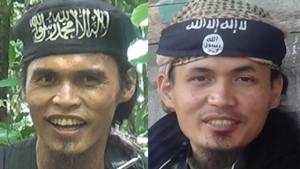 fter Sanusi’s death, the Maute family went into hiding in the belief that they were to be arrested for protecting the Indonesian terrorist Omar Khayyam and Abdullah (pictured) are the known leaders of the so-called “Maute Brothers” of the “Maute Group”, although their preference has always been for the name of Dawla Islamiyah. Both brothers are believed to have been radicalised in the Middle East. Omar Khayyam completed Islamic Studies at Al-Azhar University in Egypt, while Abdullah finished his Islamic Studies in Jordan. Omar was considered the ideological leader in the Maute group while Abdullah served as the commander of its military operations.
fter Sanusi’s death, the Maute family went into hiding in the belief that they were to be arrested for protecting the Indonesian terrorist Omar Khayyam and Abdullah (pictured) are the known leaders of the so-called “Maute Brothers” of the “Maute Group”, although their preference has always been for the name of Dawla Islamiyah. Both brothers are believed to have been radicalised in the Middle East. Omar Khayyam completed Islamic Studies at Al-Azhar University in Egypt, while Abdullah finished his Islamic Studies in Jordan. Omar was considered the ideological leader in the Maute group while Abdullah served as the commander of its military operations.
The Maute brothers were originally members of a violent localised clique that initially came to the attention of the authorities in Mindanao after they allegedly started attacking gays and Christians in Marawi, before progressing to the killing of military and police personnel.
Things went quiet in Marawi in 2013 as the attention of the authorities was focussed on the followers of Moro National Liberation Front (MNLF) founder Nur Misuari, when they seized villages in Zamboanga City in September 2013
The Maute brothers finally regained the attention of the country’s security apparatus in 2014, when they publicly pledged allegiance to Islamic State (IS), but it was only in 2016 that the brothers gained international attention and notoriety after they attacked a military detachment and killed two soldiers in nearby Butig, the hometown of their mother
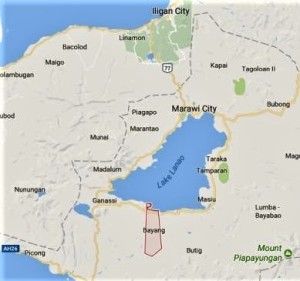 At least 4 AFP military operations were launched in Butig against the Maute Brothers through 2016. In April 2016, they mimicked IS executions when they beheaded two Christian sawmill workers, then in November 2016, they flew the notorious IS black flag at the Marawi town hall. The brothers were also believed to have been responsible for the September 2016 bombing in Davao City that killed at least 15 people.
At least 4 AFP military operations were launched in Butig against the Maute Brothers through 2016. In April 2016, they mimicked IS executions when they beheaded two Christian sawmill workers, then in November 2016, they flew the notorious IS black flag at the Marawi town hall. The brothers were also believed to have been responsible for the September 2016 bombing in Davao City that killed at least 15 people.
In December 2016, Abu Sayyaf senior leader Isnilon Hapilon, the anointed emir of IS-Southeast Asia, formally aligned himself and his group with the Maute Group.
When clashes started in Marawi, President Duterte immediately declared martial law across Mindanao. Hapilon had earlier been thought killed in action by the AFP, until he turned up in Marawi City on 23 May. When soldiers of the AFP located Hapilon in Marawi, and made an attempt to capture him, they found themselves outgunned and outnumbered when hundreds of armed and black-clad Maute Group militants appeared on the streets in coordinated attacks that took the AFP soldiers by surprise.
A video seized from a safe house clearly showed Abu Sayaf leader Hapilon and the Maute Brothers planning their attack on Marawi, intending to seize the city and declare it an Islamic caliphate on the 1st day of Ramadan, in an apparent attempt to replicate what IS leader Abu Bakr Al-Baghdadi had done when he took the Iraqi city of Mosul in 2014.
Butig, the mountainous hometown of the Maute brothers’ mother, Farhana, is where one of the biggest camps of the Moro Islamic Liberation Front (MILF) is located. The MILF is the dominant Muslim rebel group in The Philippines and has been fighting for decades to gain self-rule in Mindanao. In the early 2000s, after military offensives destroyed residential housing, commercial and industrial buildings, and government offices, as well as displacing thousands of residents, the MILF and the National Government engaged in a ceasefire and peace talks.
The Maute brothers were well connected to the MILF hierarchy, but they were long opposed to the peace process being pushed by the leadership of the MILF. Military Intelligence in The Philippines believed that the Maute patriarch, Cayamora, had previously served as an engineer in the MILF engineering bureau, while the matriarch, Farhana, is considered to be local “royalty”, belonging as she does to a major political clan, the Romato, which intermarried with the Mimbantas, the family that has ruled the MILF for decades. These relations triggered suspicions that the MILF had been colluding with Abu Sayaf and Maute group, despite the MILF having cooperated with the military in its offensives.
But the position of the MILF became clear when they denounced and opposed the IS ideology that the Maute Group had started to promote. Family ties, however, allowed the Maute Group to recruit among MILF clans, especially among the younger, second-generation MILF cadres
The Maute Group also exploited the growing weariness of young Muslims over the continued failure of the Government and the MILF to deliver on the promises inherent in the peace process, and many of these disaffected younger Muslims lived in Marawi and elsewhere in Mindanao. Successive disappointments with the government made them susceptible to the radical ideology of IS and the conviction that they needed to take and hold their own territory, where they could establish a caliphate in Mindanao.
In Marawi, a lot of the recruitment was done on social media, while in neighbouring. Butig, where there is no internet, recruitment was done through face-to-face engagement, and where new recruits were brought to undergo military training. The brothers also recruited children, promising them that they could study the Koran, but instead sent them for military training. In Marawi, the fighters of the Maute Group were given a boost by local Abu Sayyaf fighters and by foreign fighters who had flown into Marawi City.
The AFP later claimed that the Bangsamoro Islamic Freedom Fighters and the Ansarul Khalifa Philippines of Sarangani, two other IS-linked terrorist groups, had also planned to reinforce the fighters in Marawi.
The Maute Group reportedly received substantial foreign funding. Malaysia’s most wanted terrorist, Mahmud Ahmad, is believed to have channeled at least USD600,000 towards financing the coordinated attacks in Marawi, while President Duterte claimed that narco-politics helped fund the Maute Group, fitting the conflict into the narrative of his war on drugs, rather than recognising the grievances that had been building in Mindanao for years.
The reality in Mindanao is that families join and support armed groups for various reasons – religion, pride, power, and wealth to name a few, so it was both self-deceptive and strategically dangerous of the President to oversimplify the cause of conflict to fit a narrative that he has been pushing since his election.
Even the “emir” of IS Southeast Asia, Isnilon Hapilon belonged to an organization (Abu Sayyaf) that historically has kidnapped foreign and Filipino hostages, in the process raking in millions of dollars of ransom money. Occasionally, Abu Sayyaf used the IS black flag to elevate the group’s international profile, but within Abu Sayyaf there are many factions, and Hapilon was known to have retained some Islamist ideology despite the banditry of his group.
In Marawi, once the uprising had gotten underway, the MILF created “peace corridors” to assist trapped civilians trying to escape the war zone, and helped to secure adjacent towns where the conflict could spill.
Once the Government of The Philippines had declared an end to hostilities, the US Government hailed the Armed Forces of the Philippines (AFP) for killing the siege leaders, confirming that despite recent criticism of the US Government by President Duterte, the American government continues, through intelligence, surveillance and reconnaissance [ISR] capabilities, to support The Philippines
In Indonesia, it is believed that IS had been so preoccupied with what was happening in Marawi City, that it neglected terror attacks in Indonesia as dozens of Indonesian supporters and sympathisers found their way to Marawi through what is seen as a regional “jihadi pipeline” established to move militants around the region.
Indonesia’s counterterrorism units, especially Special Detachment 88 (Densus 88- Detasemen Khusus 88), have been successful in foiling major terror plots in Indonesia, wherein the main, Indonesia jihadis have been reluctant (with one or two exceptions) to mount operations where there is (in the largest Muslim nation in the world) a likelihood they will kill fellow Muslims (as opposed to IS ideology which justifies the killing of fellow Muslims as acceptable in their strategic view of Jihad)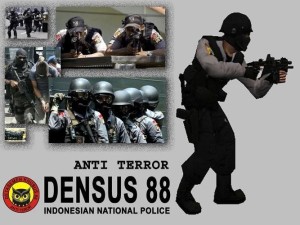
 In Myanmar, the mass exodus of Muslim Rohingya from Myanmar to Bangladesh came after the IS-aligned ARSA (Arakan Rohingya Salvation Army) mounted coordinated attacks, in late August, against 30 police and Army posts in northern Rakhine (Arakan) State, killing a number of policeman and officials, stealing weapons, leading to the Burmese Army embarking on a campaign of retaliation.
In Myanmar, the mass exodus of Muslim Rohingya from Myanmar to Bangladesh came after the IS-aligned ARSA (Arakan Rohingya Salvation Army) mounted coordinated attacks, in late August, against 30 police and Army posts in northern Rakhine (Arakan) State, killing a number of policeman and officials, stealing weapons, leading to the Burmese Army embarking on a campaign of retaliation.
While ARSA claims that what it did was in retaliation for decades of Burmese Buddhist oppression, there has undoubtedly been a larger game in play here, and the plight of the Rohingya has been exploited cynically but effectively by ARSA militants and leadership. International coverage of the Rohingya plight is at unprecedented levels, potentially lucrative support from the Arab and Muslim world (wealthy individuals in Pakistan and Saudi Arabia appear to be at the forefront with funding at this stage) is likely in support of their fellow Muslims, while simultaneously the pool of angry young Rohingyas from whom to recruit grows larger.
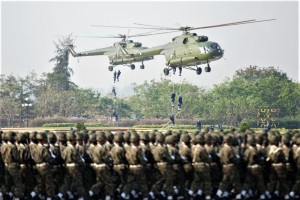 Since the Burmese Army (locally known as the Tatmadaw – pictured on parade in Naypyidaw) embarked on their campaign of retaliation, which led to over half a million Rohingyas crossing the border into Bangladesh, international agencies now estimate that there are more Rohingyas living in refugee camps in Bangladesh than remain in Myanmar.
Since the Burmese Army (locally known as the Tatmadaw – pictured on parade in Naypyidaw) embarked on their campaign of retaliation, which led to over half a million Rohingyas crossing the border into Bangladesh, international agencies now estimate that there are more Rohingyas living in refugee camps in Bangladesh than remain in Myanmar.
ARSA, originally known as Harakah al-Yaqin or “the faith movement”, was established in 2012, after deadly 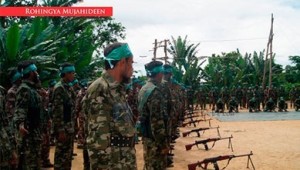 riots between Muslims and Buddhists in Rakhine State (Arakan), during which around 200 people, almost all of them Muslims, died. ARSA is overseen by a committee of Rohingya emigres based in Saudi Arabia and has links to international jihadist organisations, although to date it has not attacked civilians or religious targets.
riots between Muslims and Buddhists in Rakhine State (Arakan), during which around 200 people, almost all of them Muslims, died. ARSA is overseen by a committee of Rohingya emigres based in Saudi Arabia and has links to international jihadist organisations, although to date it has not attacked civilians or religious targets.
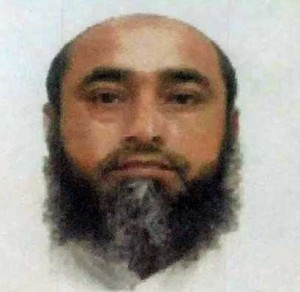 One Rohingya extremist calling for jihad in Myanmar is Karachi-based Abdul Qadoos Burmi, (pictured) who has links to one of South Asia’s largest terrorist organisations, Lashkar-e-Taiba (the Army of the Righteous – based in Pakistan and responsible for the bloody terror attacks in Delhi, India, in November 2008, when over 170 people were killed by 10 Pakistani LeT terrorists).
One Rohingya extremist calling for jihad in Myanmar is Karachi-based Abdul Qadoos Burmi, (pictured) who has links to one of South Asia’s largest terrorist organisations, Lashkar-e-Taiba (the Army of the Righteous – based in Pakistan and responsible for the bloody terror attacks in Delhi, India, in November 2008, when over 170 people were killed by 10 Pakistani LeT terrorists).
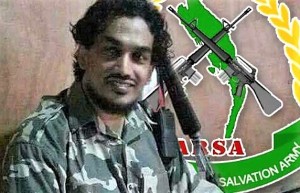 It is currently estimated that ARSA has around 500 hardcore militants in its ranks, of whom around 150 are foreigners, most of whom have fought in Iraq and Syria with IS. ARSA is led by militant Ata Ullah (Ataullah Abu Ammar Jununi – pictured) a Rohingya born in Karachi Pakistan, educated in Mecca, Saudi Arabia and reportedly trained by the Pakistan Taliban
It is currently estimated that ARSA has around 500 hardcore militants in its ranks, of whom around 150 are foreigners, most of whom have fought in Iraq and Syria with IS. ARSA is led by militant Ata Ullah (Ataullah Abu Ammar Jununi – pictured) a Rohingya born in Karachi Pakistan, educated in Mecca, Saudi Arabia and reportedly trained by the Pakistan Taliban
The Muslim Rohingya have been referred to as the world’s “most friendless people” and are undoubtedly in need of some international protection. For decades, they have faced persecution and been denied citizenship in Buddhist-majority Burma. With the country’s democratic reforms in 2011, ending half a century of military rule, many in the international community had hoped the Burmese government would provide that protection, especially since the nation is now led by Aung San Suu Kyi, a Nobel Peace Prize laureate and self-proclaimed pacifist.
But the reality in Burma is that Suu Kyi has no direct control over Burma’s military under the new constitution. She is also aware that her support base derives from the majority Buddhist population, and like most of those Burmese, she subscribes to the belief that the Rohingya are essentially illegal Bangladeshi interlopers, despite evidence of their presence in the Rakhine/Arakan region for generations, and probably centuries.
The Burmese government and the population in general officially refer to the group as “Bengali.” But the Rohingya leadership has become media savvy, much more effectively than the Burmese military (seen internationally as heavy-handed thugs), and images and testimony shared by the Rohingya have galvanized people from Chechnya to Jakarta to protest against Burma’s treatment of the Rohingya.
Bangladesh now hosts 750,000 Rohingya refugees, and the Dhaka government has described Burma’s actions as “genocide.”
OAM Principals have worked extensively in Indonesia, across SE Asia and in Indochina and currently support major international mining and investment groups in the region.

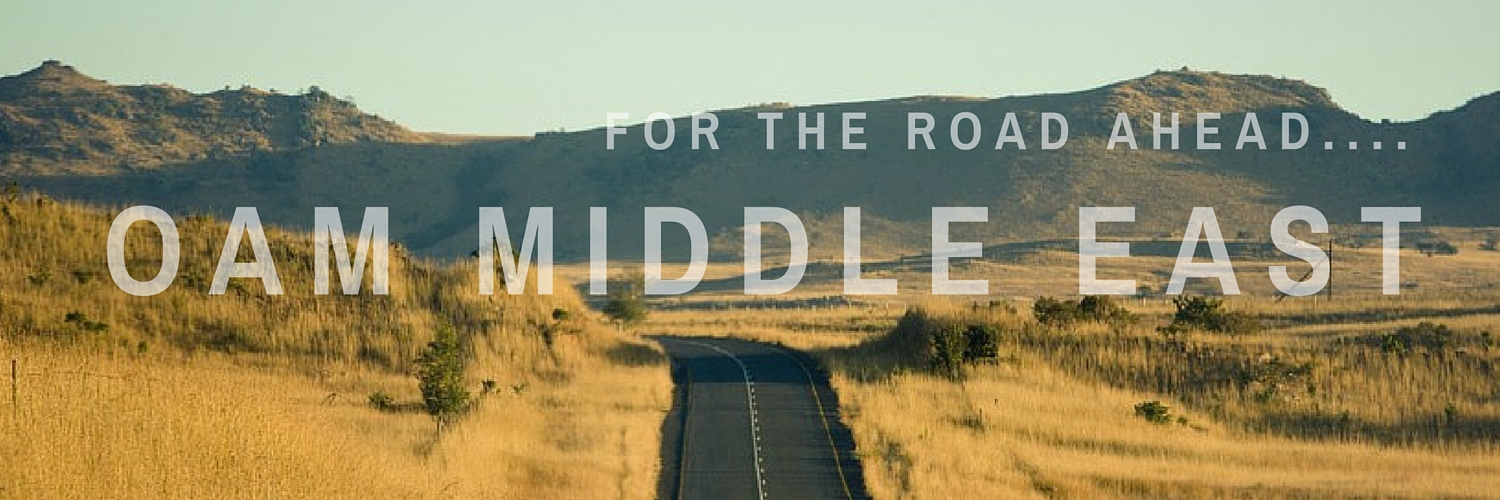
Leave a Reply